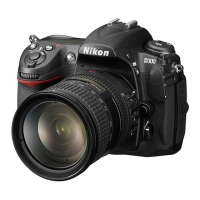Flash Modes
(User’s Manual – D300S page 169; D300 page 171)
The built-in pop-up flash has two types of flash metering:
▪ i-TTL Balanced Fill Flash – The flash fires in two
stages. Nikon calls stage 1 “monitor preflash”. The
built-in flash emits a series of almost invisible flashes
before the main flash burst fires (stage 2). The preflashes
allow the 1005-pixel RGB flash sensor to examine all
areas of the frame for reflectivity. The camera uses the
Matrix meter and distance information from a D or G
lens to calculate a flash output that is balanced between
the main subject and ambient lighting.
▪ Standard i-TTL – When the Spot meter is used the
camera automatically switches to standard i-TTL. This
mode ignores the background and concentrates on
whatever is under the camera’s selected AF point. For
the most accurate flash output for a specific subject, just
set your camera to use its Spot meter and the flash will
meter for the subject only.
In addition to the types of flash metering, the camera also has
five Flash modes that affect how it controls light. We’ll
consider each of them shortly, but first let’s talk about how
the shutter blades work when the flash fires. This is basic
information that will help you understand the Flash modes.
To fully know what’s happening when the flash fires, you
must understand a little bit about the shutter curtains in your
camera.
751

